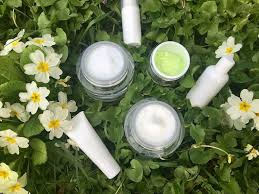
Can You Use Vitamin C Before Retinol? A Complete Guide to Layering These Skincare Powerhouses
There’s often confusion around using vitamin C and retinol together in your skincare routine. Are these two powerful ingredients safe to combine?
Should you apply vitamin C before retinol or avoid pairing them altogether? Let’s clear up the myths and share how to use them effectively for glowing, youthful skin.
Understanding Vitamin C and Retinol: What They Do
Vitamin C is a potent antioxidant famous for brightening dull skin, fading dark spots, and protecting against environmental damage.
It helps strengthen your skin barrier and defends against free radicals — unstable molecules that cause premature aging.
Retinol, a form of vitamin A, works deeper in the skin to stimulate collagen production, smooth fine lines, and boost cell turnover.
This makes it a go-to for anti-aging, acne control, and improving overall texture.
Can You Use Vitamin C Before Retinol?
Yes, you can! Applying vitamin C before retinol is safe if done correctly. The key is to give your skin time to adjust between the two products because of their different pH levels.
Vitamin C prefers a lower pH (around 3.5) to be effective, while retinol works better at a higher pH. Applying them directly one after the other can reduce their effectiveness and cause irritation.
Why Does pH Matter in Skincare?
Your skin naturally maintains a slightly acidic pH between 4 and 6 to stay healthy. When you apply skincare products, their pH can either support or disrupt this balance.
Vitamin C serums often have a low pH, which helps the vitamin absorb but can temporarily lower your skin’s surface pH.
Retinol prefers a more neutral pH environment, so using them simultaneously can neutralize their benefits.
To avoid this, wait about 20 to 30 minutes after applying vitamin C before layering retinol. This allows your skin’s pH to rebalance, making both ingredients effective.
Can You Put Vitamin C and Retinol On At The Same Time?
It’s best not to apply vitamin C serum and retinol at the exact same time. The conflicting pH levels can cancel out each other’s effects and may increase irritation risk.
However, you can use both in your skincare routine by applying them at different times of day or spacing their use on alternate days. This way, you get the benefits of both ingredients without harming your skin.
Benefits of Using Vitamin C and Retinol Together (But Not Simultaneously)
When used properly in tandem, these two ingredients can:
Even out skin tone by fading dark spots and hyperpigmentation
Brighten your overall complexion with a healthy glow
Reduce redness and inflammation
Smooth rough skin texture for a refined finish
Combat acne and prevent future breakouts
Firm and tighten skin by stimulating collagen
Minimize fine lines and wrinkles, slowing premature aging
Their complementary actions help create a radiant, youthful complexion when used thoughtfully.
How to Use Vitamin C and Retinol Together: Tips and Tricks
Vitamin C in the morning: Apply your vitamin C serum first thing in the day to protect your skin from free radicals caused by sun exposure and pollution.
Retinol at night: Use retinol in your evening routine because sunlight can degrade retinol, reducing its potency. Nighttime allows retinol to work without interference.
Wait between products: If layering on the same routine, wait 20-30 minutes after vitamin C before applying retinol. This gap allows your skin’s pH to normalize.
Alternate days if needed: If your skin is sensitive or new to these ingredients, try vitamin C one morning and retinol the next evening, rather than using both daily.
Hydrate and protect: Always follow retinol with a moisturizer containing hydrating ingredients like hyaluronic acid to counteract dryness. Apply SPF 30+ every morning to protect your skin.
Should You Use Vitamin C at Night?
You can, but it’s a personal choice. Many prefer vitamin C in the morning to boost antioxidant protection during the day. At night, your skin repairs itself naturally, and retinol is generally prioritized.
That said, vitamin C’s antioxidant benefits can also help reverse daytime damage if applied before bed. If your routine suits it, go ahead. Just be mindful of how your skin reacts.
What to Apply After Retinol?
Retinol can cause dryness or irritation, especially when first introduced. Follow up with a moisturizer rich in hydration, such as one containing hyaluronic acid, glycerin, or ceramides.
These ingredients help restore moisture, soothe the skin, and maintain your skin barrier’s integrity while retinol works on cell turnover.
Why You Shouldn’t Mix Vitamin C and Retinol in One Product
Avoid products that combine vitamin C and retinol directly. The differing pH needs mean they can neutralize each other, making the product less effective.
Stick to separate vitamin C serums and retinol creams or treatments, and use them in separate steps or times to get the full benefit.
Start Slowly and Listen to Your Skin
Both vitamin C and retinol are potent ingredients that can cause irritation if introduced too quickly.
Begin by using vitamin C daily or every other day, and retinol just a few times a week, gradually increasing frequency. Always monitor how your skin responds and adjust as needed.
Don’t Skip Sunscreen: Your Skin’s Best Friend
One of the most crucial steps when using vitamin C and retinol is daily sun protection. Both ingredients make your skin more sensitive to UV rays, which can worsen skin damage.
Even on cloudy days, apply broad-spectrum SPF 30 or higher. This shields your skin from UVA and UVB rays and helps maintain the results from your skincare routine.
Hydration is Key When Using Vitamin C and Retinol
Both vitamin C and retinol can cause dryness, especially when first added to your routine. Combat this by pairing them with hydrating products.
Look for moisturizers or serums containing hyaluronic acid, squalane, or glycerin to lock in moisture and keep skin plump and comfortable.
Final Thoughts: Using Vitamin C Before Retinol for Best Results
Vitamin C and retinol are skincare heroes that can transform your complexion if used correctly. You can apply vitamin C before retinol, but spacing them out and understanding their pH needs is essential.
With the right approach, you’ll enjoy brighter, smoother, and firmer skin, with fewer signs of aging and a radiant glow.
Have Questions? Let’s Chat!
Skincare can be tricky, especially with powerful ingredients like vitamin C and retinol. If you want personalized advice or more tips, feel free to reach out on Instagram or send me a direct message.


